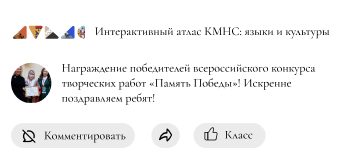Demographics
Ethno-demographic data for 1912-1913 show that the Chulyms are an ethnic community with a very high degree of endogamy. At the time, all members of the 252 non-Slavic farms belonged to the same nationality. Marriages between representatives of the non-Slavic population and Russians were an exception. In addition to the ethnic there was also the territorial endogamy.
The total number of Chulyms, according to the 2020-2021 All-Russian Population Census of the Russian Federation, is 382 people (179 men and 203 women).
Most of the newlywed couples came from the Tutal-Chulym non-Slavic
uprava
(municipality). The marriages outside its borders were limited to the Meletsky non-Slavic municipality of the Achinsk district of the Yenisei province and the Kyzyldeevskaya municipality of the Mariinsky district of the Tomsk province, where the Turkic-speaking population was very close to the Chulyms in language, culture, and way of life. Of the 609 men and 643 women, 260 men and 300 women were of active working age. There were 298 children aged 1 to 7, 312 aged 8 to 13, which came to a total of 610 persons amounting to about half (48.1%) of the total number of 1257 people and corresponded to the situation of basic population replacement.
Between 1913 and 1996, the number of Chulym Turki decreased by 495 people, natural growth having thus become negative. The ratio and especially the quality of demographic indicators show a critical state of depopulation.
Monoethnicity is now a thing of the past: only half of the households (146) all 100% Chulym. The number of mixed households consisting of Russians and Chulyms is 148. The number of ethnically mixed households and, accordingly, mixed families is somewhat increasing due to other ethnically mixed marriages: Chulym-Belarusian, Chulym-Latvian, and others. The gender ratio among the Chulym people is 363 men and 379 women; in the age cohort of over 15 there are 271 men and 250 women. There are 221 children aged 1 to 15, and 58 teenagers aged 15 to 19. The ratio of the younger and older cohorts in the first case is 28% and 72%, respectively, and, including the adolescents, 37% and 63%. But even in this case, we can say that this reflects contracted or even very contracted reproduction. In the age pyramid, the number of people in the most reproductive age and elderly people is approximately 225 men and 231 women.
Beginning with the census of 1939, the Chulyms were classified as the Khakass and not indicated as a separate ethnicity at all. The census, which identified the Chulyms as a separate ethnic group for the first time, was carried out in the Teguldet district in April 1996 in accordance with the resolution of the administration of the Tomsk region.






















































